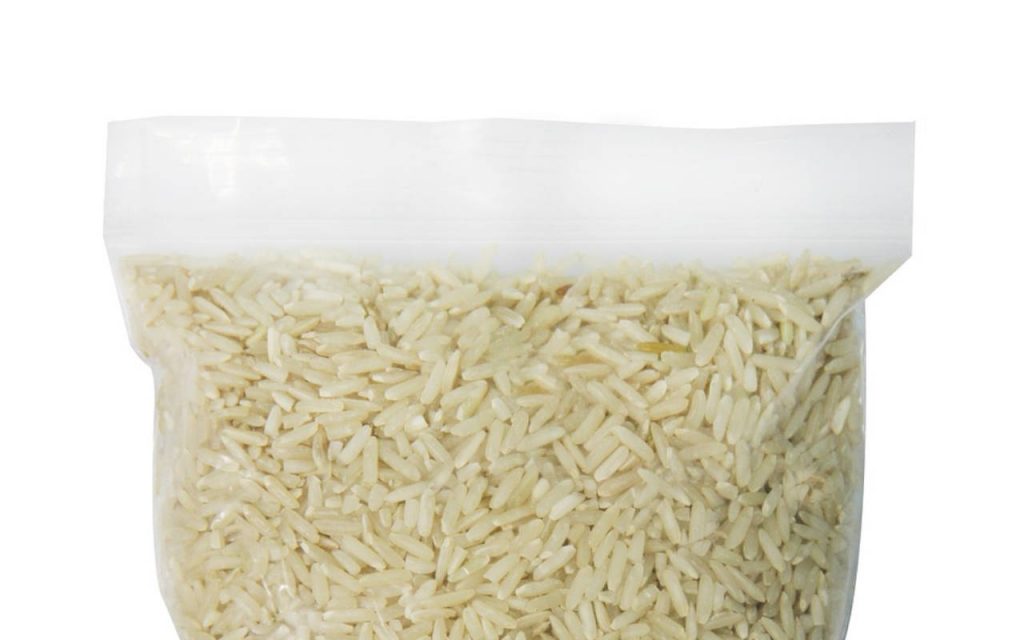We’ve all had this happen to us, right?
You get home from doing the weekly shop with a big new bag of pasta, or rice, or some other bunch of tiny starchy things – and when it comes time to cook, you try to open the bag. The bag practically explodes with the force you need to actually open it, and the tiny but infinite contents spill everywhere.
You never do manage to clean it all up, and end up picking grains of rice off your feet for months. There’s definitely a pasta twist or two behind the sofa or the TV cabinet, or behind the kickboards in the kitchen.
Whatever’s left in the bag has to go into another receptacle – usually a freezer bag, the grip seal polythene bag kind. And all it does is create more waste, faster. Well, not quite…
You see, frustrating packaging can deter customers from buying brands ever again. If it’s their first try of your product, you need to make a great impression – and if you’re switching packaging, you need to keep your existing customers happy with a similar or even better packaging experience.
Tear line polythene bags are one of the best and most convenient to open packaging solutions available today. End customers love them because they are predictable and extremely easy to open, mess-free, tool free, and often have grip seals built into them.
So, how do we create these bags (also known as tear notch bags)? Read on to find out…

How are tear line polythene bags made?
How are tear notch bags made to consistently open on the line, and what are the challenges? Well, you might have had some tear line bags that don’t quite tear in a straight line – and these are relying on shearing forces alone from the initial notch, which can be a bit unreliable. But other manufacturing techniques allow for a specific weakened region to be created solely for tearing.
After the polythene film bubble is extruded as layflat tubing (LFT), it’s fed into a bag-making machine. At their most basic, bag-making machines seal and cut one end of the LFT to create a bag. But more complex implementations can include forming side weld bags, gussets, as well as the inclusion of a tear notch.
The notch and tear line is typically made by a heated blade or another specialised mechanism. In basic systems, a notch is cut into one edge on a side-welded or flanged bag, and the shearing force of tearing the bag open is all that guides the opening process. In more advanced systems, the mechanism can be precisely set to create a weakened area along the width of the open end of the bag, allowing for easier tearing along a designated line.
The bag can then be filled and sealed above the notch, giving end customers a clean tear when they open the packaging.
Challenges
Getting a consistent tear in tear line polythene bags can be difficult, even with well-calibrated equipment. The type and thickness of the polythene used can influence the ease of creating a clean tear line. Softer blends and heavier gauges can make it harder to achieve a precise tear without compromising the bag’s integrity.
Production can also be slower, as more stages are added to the manufacturing process. This is reflected in a higher cost – but the gains are substantial from a customer satisfaction point of view, and from a product quality point, too.
Importance of a good opening tear system for resealable packaging
Resealable bags have come a long way. Grip seal is becoming more popular, but sticky tabs are still used – even though they tend to be unreliable in comparison. Regardless of the resealing method, the tear is the most important part, because it impacts the lifespan of the packaging, the customer experience, the quality of the goods, and the accessibility of your product.
A good tear system gives effortless opening to your consumers, enhancing their experience with the product, and making it more convenient for users of all ages and physical abilities to use.
An effective tear system maintains the integrity of the package, and avoids accidental damage to the packaging material, which might compromise the product’s freshness and quality – and prevents it from spilling all over the floor!
A good tear system also makes for easy resealing of the package, for better preservation. Plus, it keeps the contents contained, which is handy for things like screws and wall plugs that tradespeople keep in tool boxes and bags.
Ultimately, it’s all about customer satisfaction. But the benefits of tear line bags extend into environmental impact; reducing waste, and promoting reuse in resealable systems. If you’re thinking of moving over to an easy open, resealable packaging system, talk to the packaging design team at NPF Packaging today, to get a bespoke system made for your products.
Tear line polythene bags
Get tear line polythene bags made to your exact specifications, from NPF Packaging – a UK polythene packaging manufacturer. Get a quote now, or call us on 01773 820415 to start your order.


